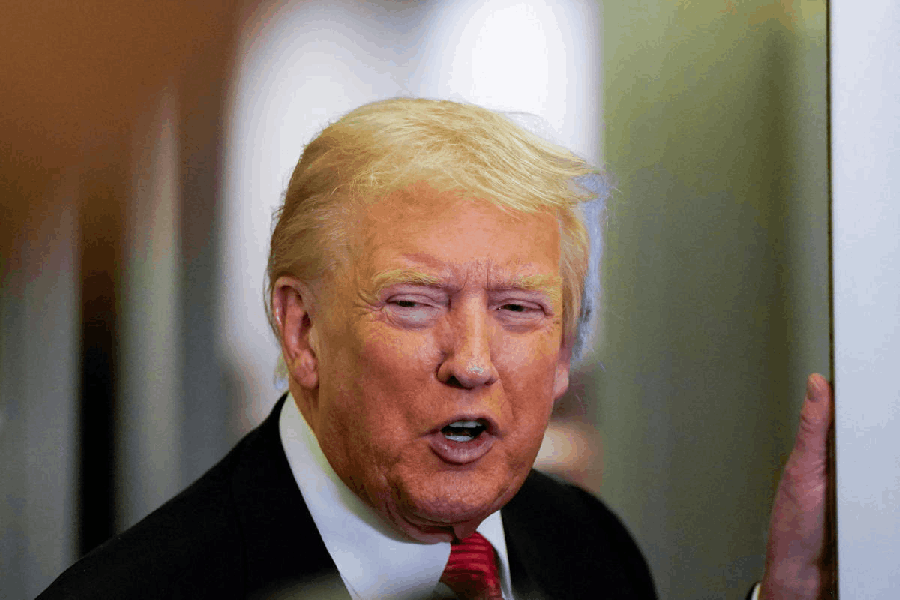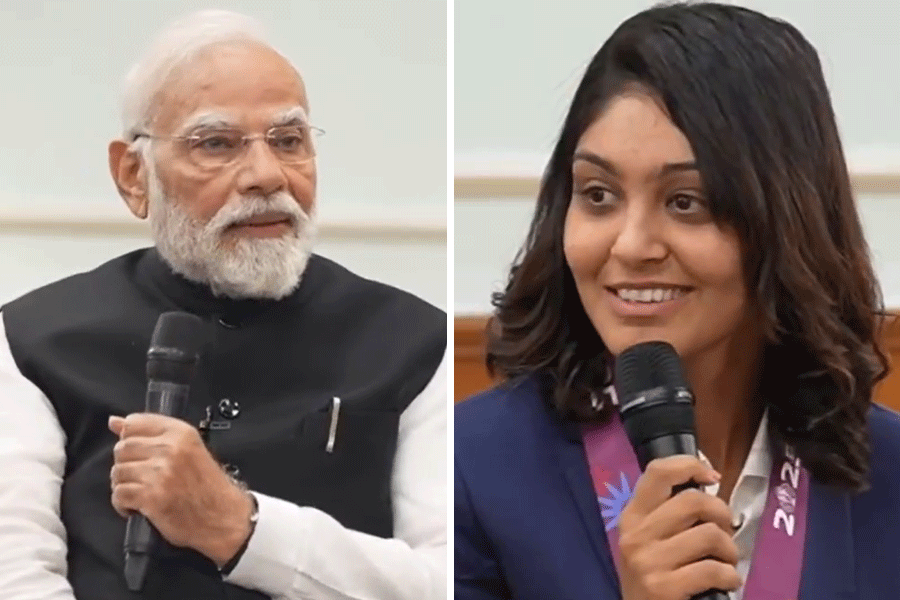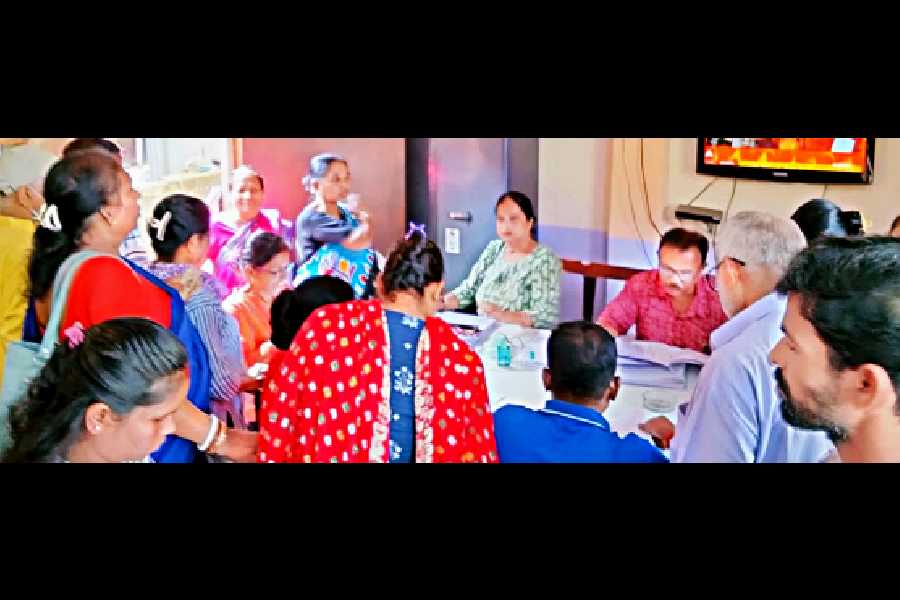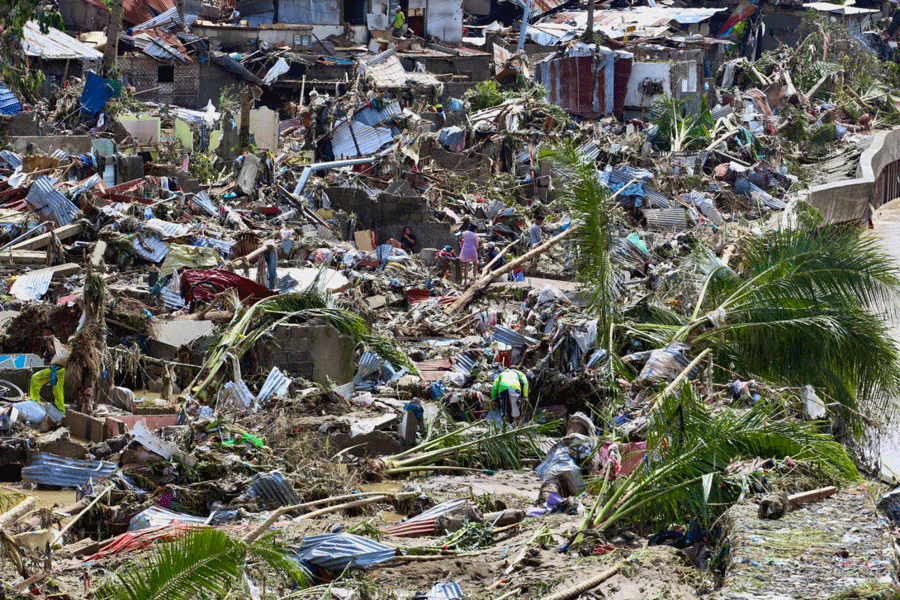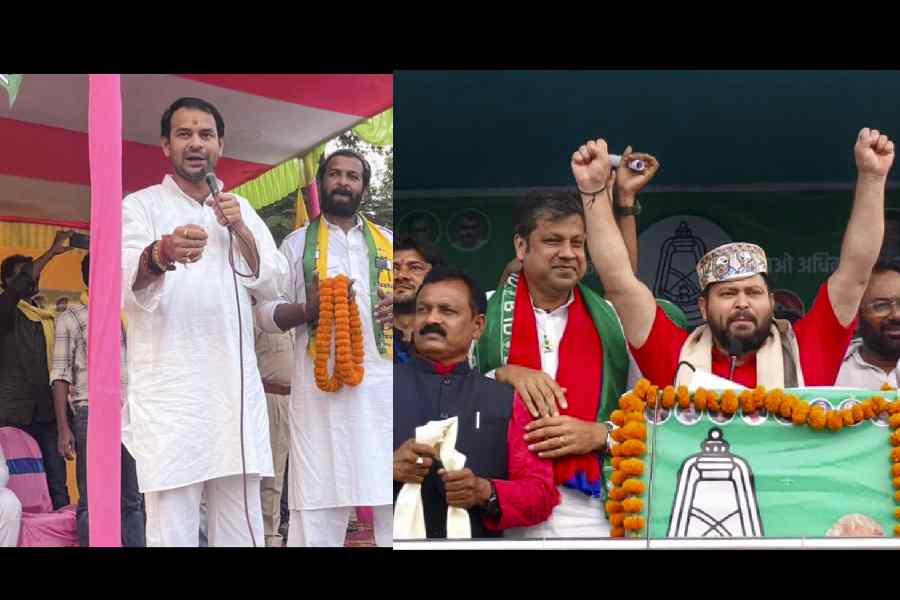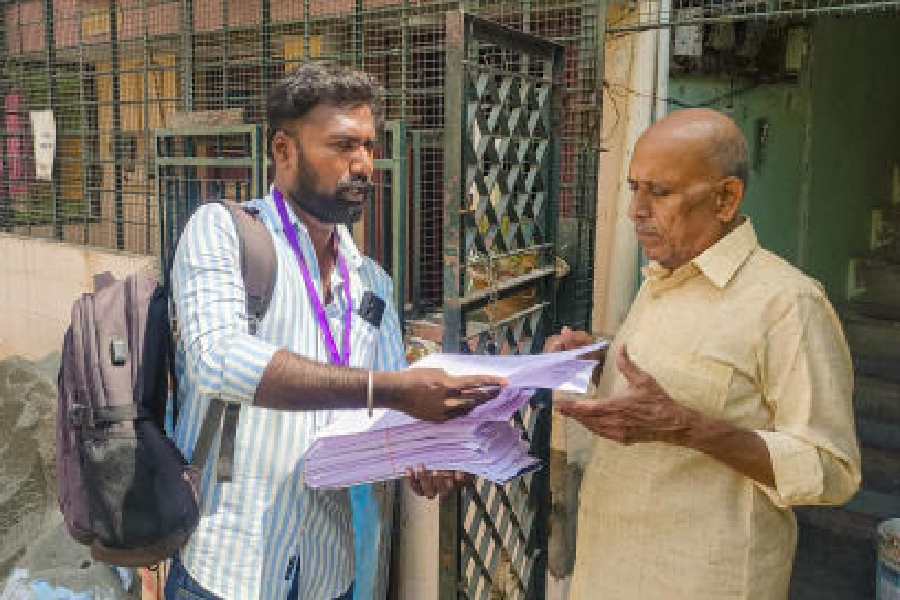 |
| Break in flow |
There was no intention or plan to return to a particular subject in my column, but one thing leads to another. My meditation on the Gujarati painter, Gulammohammed Sheikh, two months ago got me an invitation to a conference at a Gujarati university last month, which in turn led to a reflection about the predicament of higher education in Gujarat today. But having scratched the surface, I realized I had, in fact, touched a raw nerve. There is no choice now but to dwell on the pain until its source becomes clear.
After the Emergency, the Hindu Right steadily gained legitimacy in both state and national politics. In many places, its ascendancy as well as its struggle for power against other, more entrenched, political ideologies, such as those of the Congress or of the Left, has been accompanied by both virulent rhetoric and actual violence. However, communalism has not been the special preserve of Hindutva: every political party, of whatever persuasion, has been at some point guilty of it; every significant minority — Muslims, Sikhs, Christians, Dalits, Kashmiri Pandits — in some regional context or the other, has been persecuted.
What distinguishes Gujarat over the past decade is not the mere fact of its having a Bharatiya Janata Party-led government; not the re-election of that government; not the communal character of politics in the state; not the occurrence of an incident or several incidents of communal violence; and not even the complicity of the state’s administration and law and order machinery in that violence. Rather, it is, firstly, the scale of the violence against Muslims in 2002, and subsequently, the authoritarian nature of the BJP regime and of the personality of the chief minister that make Gujarat genuinely anomalous. This particular kind of leadership has never before been seen at a state-level in independent India.
In other words, we have seen all kinds of parties take power; all kinds of violence against minorities; and all kinds of regional leaders rising up and falling away. But there is something afoot in Gujarat that strains the analytic capacities of a social science premised on the idea that secularism is the highest political value of our nation. We are at a loss to explain why the Gujarati people go on choosing a communal government; why those people privilege economic prosperity over social harmony; why they prefer authoritarianism over toleration. Nobody doubts that good governance is preferable to inefficiency, and growth is preferable to corruption. But why do the norms that we thought were fundamental and inalienable for our polity — fraternity, tolerance, justice and equality — have to be sacrificed in order to get a government that delivers? If we need tyranny in order to function, and exclusion in order to prosper, then what is Indian democracy worth?
It is difficult to imagine Indian academia, particularly the study of politics in India since the 1960s, without a number of Gujarati scholars, activists and public intellectuals. Rajni Kothari, D.L. Sheth, Ghanshyam Shah, Bhikhu Parekh, Meghnad Desai, Achyut Yagnik, Asgar Ali Engineer, I.P. Desai, A.M. Shah, Girish Patel, Teesta Setalvad and Tridip Suhrud, among others constitute a proud roster of some of the best minds and the most ethical, proactive citizens of the past half-century. The cliché is that the Bengalis, the Maharashtrians and the South Indians dominate the post-colonial Indian academy, but look carefully, and you will find that Gujarat has a more than robust representation. If we go back a generation or two, we are looking at Mahatma Gandhi, Sardar Patel, Mohammed Ali Jinnah and K.M. Munshi — figures who played such an enormous role in our politics that we cannot account for our modernity without them.
And yet the current administration in Gujarat goes out of its way to destroy the institutions and practices of social science in the state. On the other hand, social science, too, fails utterly to explain the conundrum that is Modi’s Gujarat: a state where Muslim in-migration has increased after 2002; where Gandhi is less remembered or respected than perhaps in any other part of India; where a 1,000-year old history of hospitality, business and population flows has given way to xenophobia and violence; where victimized communities, which have been denied justice, nevertheless prefer to move on and get along as best they can; where secular outrage hurls itself fruitlessly against an implacable wall of communal prejudice, majoritarianism, denial and complicity on the part of a middle-class that is determined to look the other way so long as it gets what Modi himself in a recent interview called “four things — water, electric power, connectivity and distance education.”
Discourse around Gujarat has become completely polarized after 2002. You have two choices: either you can talk about economic growth and the changing parameters of governance, a discourse whose terms are set by the administration. If you go this way, you will likely produce the sort of awed, admiring and disingenuous pieces that one read recently in the Time magazine Asia edition cover story (“Modi means Business”, March 26) or in a paper by the managing director of the Brookings Institution (“India’s most admired and most feared politician: Narendra Modi”, March 16). These writings display a naive willingness to take Modi’s claims as an administrator at face value.
Alternatively, you can focus on the violence against Gujarat’s Muslims in 2002, the role of the state government in persecuting that community, and the failure of justice in the 10 years that have since elapsed. Almost all of Gujarat’s Gandhians, human rights activists, intellectuals, film-makers and artists have been focused on the violence and its aftermath, and rightly so. The discourse about what has come to be called the Gujarat “genocide” has preoccupied the secular class across religious lines: those who have worked incessantly to document what happened and to demand redressal may be Hindus, Muslims, Christians or others. In many cases, the best work of this type has come from non-Gujaratis. However, since there has been little uptake from either the government or the majority community in the state, it has become increasingly difficult to break out of a discussion that uses mutually-opposed categories like “secular” and “communal” or “guilty” and “victimized”, without finding these to be particularly productive of an explanation of why such violence was possible and how it is to be avoided in the future.
Recent work suggests that fresh thinking on Gujarat is urgently needed and that some scholars are struggling to shift the terms of the debate so as to widen their perspective beyond the two options of either lauding Modi’s economic and governance achievements or attacking his outright communalism and shocking human rights record. Painstaking research by young historians such as Samira Sheikh and Aparna Kapadia and economist Abusaleh Shariff, as well as courageous stories by journalists like Vinod K. Jose in The Caravan (“The Emperor Uncrowned”, March 1) and Hartosh Singh Bal in the International Herald Tribune (“Modi’s Ratings”, April 24), show the way forward.
Too many empirical facts about Gujarati history, society, culture, politics and economics challenge the schizophrenic discourse that is for or against Modi, and remains fixated either on the abyss of 2002 or on the myth of “Swarnim Gujarat”. Gujarat demands careful comparison with West Bengal, another state that was ruled by an ideological party over a very long period, but without a comparable record of either communal politics or economic growth. We should be studying it in relation to Karnataka or Goa, two states where the sangh parivar has grown noticeably in its influence, without that undoubtedly broadening base showing direct and seemingly uncomplicated electoral outcomes. How could we not compare and contrast Hindutva politics in Maharashtra and Gujarat, two ethno-linguistic yolks that long resided in a single egg, as it were?
Inside Gujarat, we ought to look carefully at the increasingly wealthy and powerful Swaminarayan sect, which is asserting its arrival through extraordinary constructions such as the Akshardham temples of Delhi and London. What role are the hugely popular katha-vacaks of Gujarat playing in identity politics and inter-community estrangement or reconciliation? Gujarati culture has always been premised on trade and commerce: what is the changing place of Muslims in this sphere that defines Gujarat in a much more fundamental sense than religion, sect, caste or any other vector of group identity? What are the environmental costs of Modi’s vikas; are we forgetting to look at the enormous shifts in Gujarat’s ecology as a result of the damming of the Narmada?
In the 19th century, Narmada Shankar Dave or “Narmad”, Gujarat’s equivalent of Bankimchandra Chatterjee and Bharatendu Harishchandra, Bal Gangadhar Tilak and Subramanya Bharathi, wrote a poem about his land and people: “Jai jai garvi Gujarat (Hail, proud Gujarat!)”. Modi, of course, made it into the national anthem of his mini-Hindu rashtra. Gujarat — Gandhi’s country — ought to represent something that not only Gujaratis but also all Indians can take pride in. Instead, it leaves us both intellectually flummoxed and morally ashamed. Perhaps time has come to abandon our dearest illusions and our fondest habits, and set about revising our social science to recognize that Modi’s Gujarat is a whole new problem, and not the solution to India’s problems. Without sharpening the tools of description, analysis and criticism, no society, no matter how ancient or resilient, can protect and nurture its core political values.


